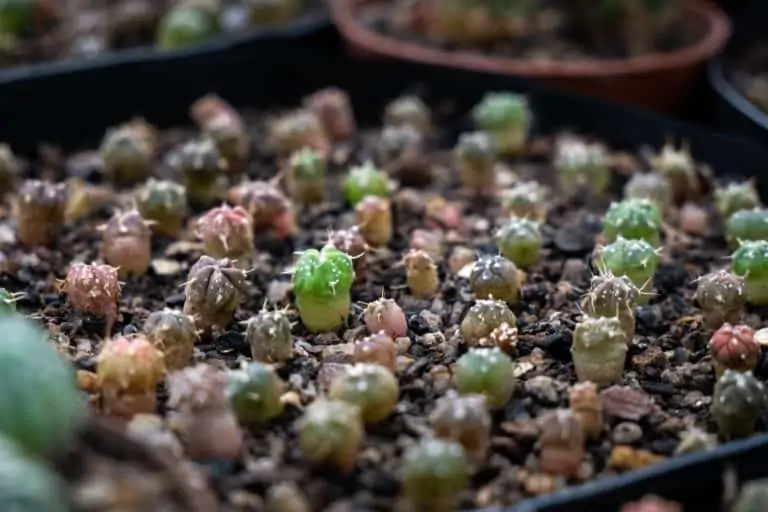Mammillaria estebanensis seeds
Accepted Scientific Name:
Cochemiea estebanensis (G.E. Linds.) P.B. Breslin & Majure (formerly Mammillaria estebanensis)
Synonyms:
Mammillaria estebanensis G.E. Lindsay, Mammillaria dioica subsp. estebanensis, Cochemiea dioica subsp. estebanensis
Common Names:
Often referred to simply as the Esteban Island Mammillaria (no widely used common names)
Mammillaria estebanensis seeds
Mammillaria estebanensis (Cochemiea estebanensis) – A Rare Columnar Beauty from Baja California
Mammillaria estebanensis, recently reclassified as Cochemiea estebanensis, is a unique, columnar cactus species endemic to the remote desert islands off the coast of Baja California, Mexico. It is particularly well-known among cactus collectors and desert plant enthusiasts for its elegant structure, golden spines, and pure white flowers that bloom at the top of its tall, ribbed stem. Growing this cactus from seed allows growers to appreciate its full life cycle while cultivating a truly rare species that reflects the wild beauty of Mexico’s Gulf islands.
Native to Isla San Esteban and surrounding islets in the Gulf of California, Mammillaria estebanensis has adapted to a rugged, sun-drenched environment with extreme aridity, rocky soils, and minimal rainfall. These challenging conditions have shaped the species into a compact but upright grower that thrives in full sun, poor soils, and high heat. Its slow-growing nature and island-restricted habitat make it a special find for cactus lovers and conservation growers alike.
This species grows as a single stem or in small clumps, forming columnar shapes that reach 12 to 20 inches tall over many years. The cylindrical stems are gray-green to blue-green, marked by distinct tubercles arranged in regular spirals. At the tips of these tubercles are areoles filled with golden to reddish-brown radial spines and a single central spine that can be straight or gently hooked. These spines are especially vibrant in younger plants, adding striking contrast and a soft halo effect against the body of the cactus.
In spring and early summer, Mammillaria estebanensis produces delicate, white, funnel-shaped flowers that form a loose ring at the top of the stem. These blossoms are typically about 1 inch wide and can appear in clusters when conditions are right. Although they’re short-lived, the flowers are a charming reward for patient growers. If pollinated, they may be followed by small red fruits that contain glossy black seeds, perfect for propagating your own colony of this rare cactus.
Growing Mammillaria estebanensis from seed is a slow but highly rewarding process. Germination typically occurs within 1 to 4 weeks when seeds are kept in warm, humid, and well-lit conditions. Seedlings are tiny and should be handled with care, kept evenly moist during their early stages, and then gradually transitioned to drier, brighter conditions as they mature. Over time, they’ll begin to develop the familiar tubercles and spines that define the species. Once established, plants should be repotted in a gritty, fast-draining cactus mix and watered sparingly.
Because of its columnar form and tidy appearance, Mammillaria estebanensis is ideal for container growing. It does well in clay or terracotta pots that allow the roots to dry quickly and benefit from airflow. In warm climates, it can also be grown outdoors year-round, especially in rock gardens or cactus mounds. In colder regions, it should be overwintered indoors in a sunny window or greenhouse, protected from frost and excessive moisture.
Why Grow Mammillaria estebanensis from Seed?
-
Rare species with limited natural distribution
-
Stunning upright growth and golden spines
-
Produces white, star-shaped flowers and red fruit
-
Excellent for collectors and seed-grown cactus displays
-
Self-contained and compact—great for small spaces
-
Thrives in high heat, full sun, and poor soils
-
Adds architectural interest to any desert plant collection
-
Grows well in containers, troughs, or rocky landscapes
Growing Conditions
-
Light: Requires full sun or very bright indirect light
-
Soil: Sandy or gritty mix with excellent drainage; cactus or mineral mix is ideal
-
Water: Water only when the soil is completely dry; reduce watering in winter
-
Temperature: Hardy to about 25°F in dry conditions; protect from frost and prolonged wet periods
-
Fertilizer: Optional—use a diluted cactus fertilizer in spring and summer
-
Propagation: Best grown from seed; very slow-growing but rewarding
Mammillaria estebanensis is not just a cactus—it’s a living sculpture born from one of the most rugged desert environments in North America. Rare, beautiful, and long-lived, it is a perfect example of form meeting function in nature. Whether you’re a dedicated cactus enthusiast or just beginning your collection, this species offers a rewarding journey from seedling to elegant, flowering columnar specimen.
